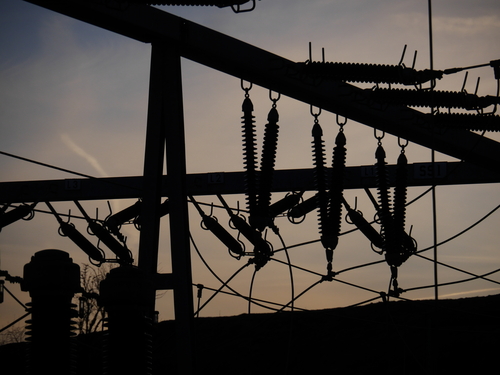Shares of Edison International fell almost 5% Wednesday a day after it reported that its Southern California Edison arm likely sparked the 2018 Woolsey Fire, which burned nearly 97,000 acres in suburban Los Angeles and killed three people.
The disclosure coincided with a Tuesday announcement by the Los Angeles Department of Water and Power, the city's public utility, said that the continuing Getty Fire in Brentwood likely started when a broken tree limb blew onto one of its power lines.
California is in a state of turmoil, as fires burn in its northern and southern regions, prompting mass evacuations.
To avert the risk of sparking further fires during strong winds and avoid potential liability, some of the state's utilities have shut off power to millions of people under an unusual state legal provision.
The standard, known as inverse condemnation, holds that if a power company's equipment starts a fire, it is responsible for paying property damages, even if they aren't found to have been negligent.
For an investor-owned utility such as PG&E and Edison, a large fire could result in billions of dollars in liability costs that could spook shareholders and strain its balance sheet.
A municipal utility like LADWP has more discretion to pass on liability costs to customers in the form of rate increases for homes and businesses.
"You could do everything right and follow every standard, do all the maintenance and inspections, go above and beyond. And if something happens, you are still on the hook for liability," said Brad Kuhn, a partner with the Los Angeles-based law firm Nossaman LLP.
Proponents of inverse condemnation argue that the standard has the potential to hold utilities accountable for system maintenance and offers some financial protection for property owners and insurers in high-risk areas.
California lawmakers have debated changing the legal provision, and utilities have pushed for changes. But so far, legislators have been unwilling to alter it, which would likely require a two-thirds vote of the legislature and state-voter approval as a constitutional amendment.
State Sen. Bill Dodd, who represents Napa County, said lawmakers will need to consider modifying the liability standard as part of a series of reforms meant to change how utilities invest in their power grids.
"We're going to have to be looking at everything," the Democrat said.
PG&E Corp. has started more California wildfires than its peers in recent years and has also conducted larger pre-emptive blackouts this year, as it races to trim trees and shore up its aging transmission and distribution lines. But all of the state's utilities are struggling with similar issues posed by the risk of fires.
Edison International had previously booked a $1.8 billion after-tax charge related to the Woolsey fire in the fourth quarter of 2018 earnings. On Tuesday, as it disclosed likely responsibility for the fire, Edison said that charge was on the "lower end" of the range of estimated losses.
PG&E earlier this year sought bankruptcy protection, citing $30 billion in liabilities from fires in 2017 and 2018. It has told state officials that a high-voltage transmission line malfunctioned shortly before the beginning of the continuing Kincade Fire in Sonoma County. A final determination of the fire's cause could take months.
The threat of greater liability costs spurs utilities to reduce fire risk by any means, including blacking out swaths of their service territories when strong winds are forecast, said Jared Ellias, law professor at UC Hastings College of the Law in San Francisco. He said the resulting turmoil could spur lawmakers to rethink how liability costs are assigned.
Utilities say they want state courts to overturn or at least soften inverse condemnation. But the U.S. Supreme Court recently turned down an appeal by San Diego Gas & Electric, a unit of Sempra Energy, aimed at challenging this policy.
"There is a broad consensus that inverse condemnation law in California is broken," PG&E lawyers wrote in a brief to the bankruptcy court last week, asking the federal judge to rule that inverse condemnation doesn't apply to PG&E or any investor-owned utility.
While California's large utilities, public and investor owned, face liability risks, PG&E stands out for the number of fires it has caused. PG&E, which serves a much larger area than the state's other utilities, started 433 fires in 2018, many of them small and quickly extinguished, according to data they are required to file with state regulators. Southern California Edison reported starting 108 fires. The Los Angeles municipal utility wasn't required to report this data.
LADWP spokeswoman Ellen Cheng said she didn't want to speculate about whether the utility would face liability from the Getty Fire.
"LADWP's lines were intact, and our system didn't fail," she said. "This is one of the challenging questions the state is grappling with now."













